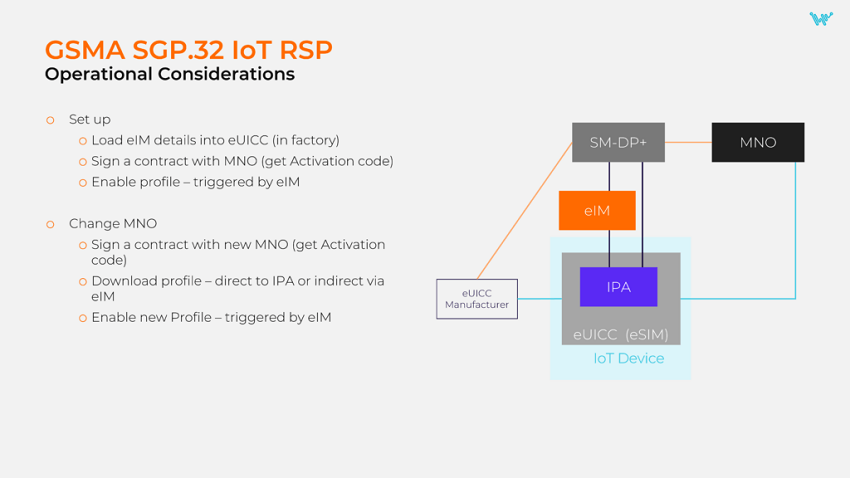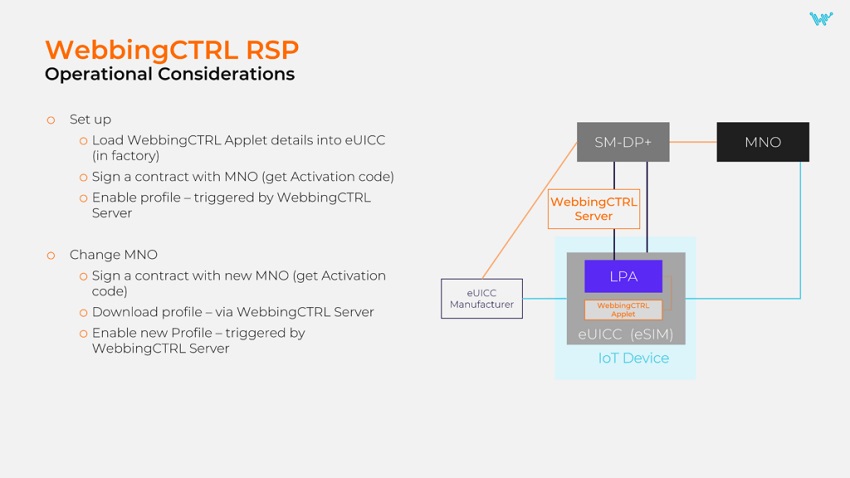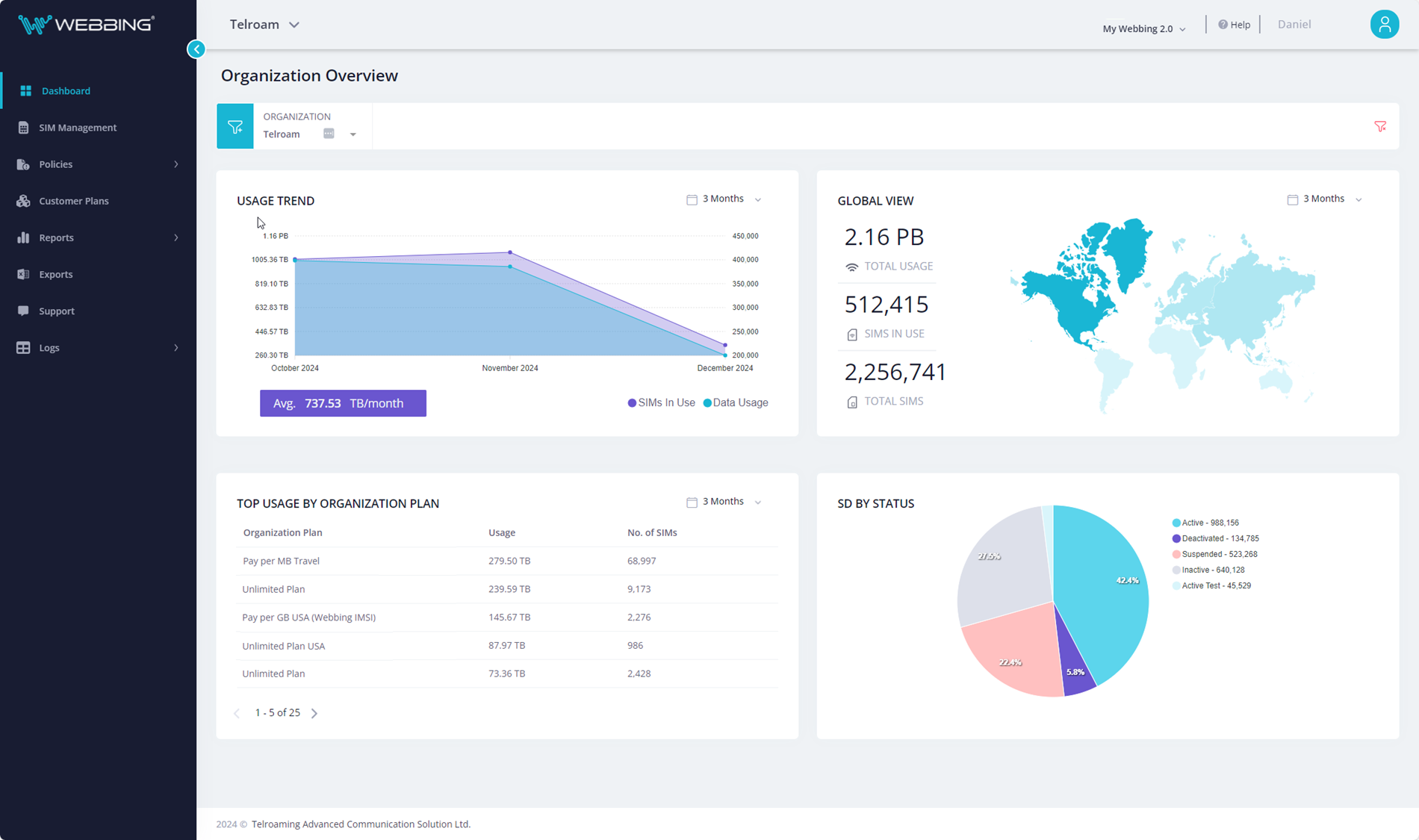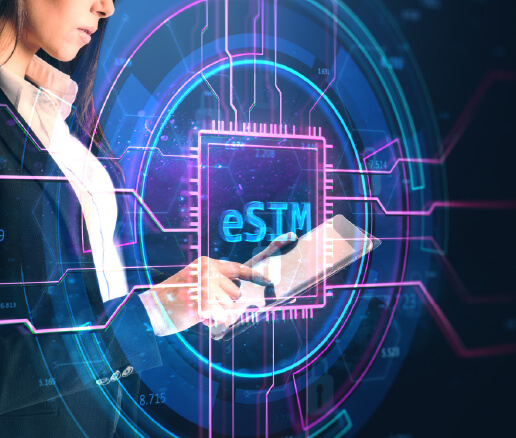by Baruch Pinto | August 13, 2025
With the finalization of the new IoT Remote SIM Provisioning standard, eSIM orchestration has taken center stage in the connectivity conversations. But as the term gains momentum across the industry, so does the ambiguity around what it actually means, and why it’s becoming essential now.

What Is eSIM Orchestration, and Why Now?
In their position paper, eSIM Orchestration: Driving the Next Wave of IoT Connectivity, Transforma Insights defined “a new role of eSIM Orchestrator, handling profile management and potentially integrating with a role of single-pane-of-glass (SPOG) connectivity abstraction platform”.
Counterpoint describes eSIM orchestration as something that integrates backend and frontend systems to deliver a seamless user experience: “by simplifying processes like provisioning, management and switching between networks, eSIM orchestration platforms are becoming essential for operators, vendors and consumers alike”.
Why has that become important now? In certain niches, companies were interested in business rule automation and policy-based switching as soon as eSIM emerged. But as IoT deployments grew in scale, more businesses with global deployments began to ask how to manage thousands of eSIMs across different regions, and deal with multiple MNOs and varying regulations.
A couple of years ago, conversations about orchestration became mainstream. A major driver behind this was the GSMA SGP.32 IoT Remote SIM Provisioning standard, which is expected to significantly accelerate the growth of connected device use and impact the development of the IoT market. At the same time, more companies, especially in automotive, logistics, and industrial IoT, started realizing that eSIM alone isn’t enough and they need intelligence on top of provisioning, and not just for cost savings, but for resilience and flexibility.
The idea of orchestration around eSIMs is not entirely new. Long before the work on SGP.32 was finished, some connectivity providers were already offering to their customers services that later would become parts of the eSIM orchestration. For example, Webbing from the very beginning aimed to provide device owners with tailor-made and future-ready connectivity under their control. Many of the elements now associated with orchestration – device onboarding, management platform, tailored connectivity offering, consistent client support — have long been core parts of Webbing’s solution.
While there is no common definition, since different vendors may include a different set of features in their offers, it is safe to say that eSIM orchestration is the next step in the evolution of connectivity management. While eSIM provisioning allows to remotely download and activate mobile profiles on devices, orchestration goes further by adding automation and logic layers. But to fully understand its value, we need to answer the key question: is eSIM orchestration a mainly technical advancement, or a strategic business capability?

The Technology Stack Behind eSIM Orchestration
At its core, eSIM orchestration is built on top of technologies:
The first and most fundamental one is, of course, the embedded Universal Integrated Circuit Card (eUICC), which transformed traditional SIM cards: they became remotely programmable and reprogrammable, they can now host multiple operator profiles, and support remote download, activation, or deactivation of profiles at any time, regardless of the device’s location.
With the arrival of eUICC came the need for a broader technological ecosystem to manage profile delivery and configuration. The GSMA initially introduced two specifications for remote SIM provisioning (RSP): Machine-to-Machine (M2M) and Consumer. The M2M model relies on two components, Subscription Manager Data Preparation (SM-DP) and Subscription Manager Secure Routing (SM-SR), and typically requires close cooperation between mobile network operators. The Consumer model simplifies things by using only an SM-DP+ and shifting the profile management to the end user, but this doesn’t work for the majority of IoT devices as they don’t have a user interface.
To overcome these hurdles, the GSMA developed another remote SIM provisioning standard for IoT devices called SGP.32. It is broadly based on the Consumer specification and allows to remotely enable, disable, delete profiles and trigger profile downloads without any technical integrations between network operators. SGP.32 moves the point of control on provisioning from the MNO or SIM vendor to their IoT customers.
However, this ecosystem isn’t limited only to GSMA-defined components. Even before SGP.32 was finalized, proprietary provisioning solutions emerged to address gaps in existing standards. Webbing was a pioneer in this development, and in April 2022, rolled out WebbingCTRL, a pre-standard eSIM remote provisioning solution that adapted the Consumer architecture for use in IoT devices with no user interface. As an active member of the GSMA working group developing the SGP.32, Webbing ensured WebbingCTRL was fully aligned with the new standard in both architecture and capabilities. Since then, over 1 million of WebbingCTRL SIMs/eSIMs have been deployed globally.
Another technology layer is Connectivity Management Platforms that provide many features to control IoT devices. They allow customers to view their plans and add new users and services, manage all deployed devices, track their health, performance and data usage, and set up device-specific settings such as data limits. Moreover, they enable businesses to activate and deactivate SIM cards or devices centrally and remotely as needed, which is particularly useful for enterprises that need to manage large fleets of IoT devices.
From a technical perspective, eSIM orchestration serves as a linchpin of the entire technology stack. By bringing all these advancements together and fine-tuning them to work as a unified system, it can address many technical challenges, such as near-instant profile switching or maintaining quality of service. But there’s more to it.

The Business Value Layer
Aside from purely technical requirements, companies have many pressing needs when it comes to connectivity. Most of all, they need business logic layered on top of all the technologies.
However sophisticated or feature-rich, all technological developments are meant to overcome technical issues. But in many cases, the main reason behind connectivity problems is not strictly technical – it’s the fragmentation of the global telecom market. The truth is that no single MNO provides perfect coverage or pricing everywhere. Countries have widely varying regulations on connectivity and data transmission, and this regulatory landscape is everchanging. Different verticals require very specific connectivity features.
That’s why in addition to relevant technologies, ensuring reliable connectivity implies rules that determine when to switch profiles or how to prioritize fallback connections, as well as understanding how to localize connectivity to meet cost or compliance goals.
For example, if a truck is moving from Germany to France, automatically switching to a local network the moment it crosses the border takes more than just two profiles, especially considering that it needs continuous connection. Applying business logic to the capabilities that technologies bring, companies can implement least-cost routing to avoid expensive roaming fees, or preconfigure fallback networks in case of failure – and all this, too, is eSIM orchestration.
What is the business value of it?
First of all, it helps to lower the total cost of connectivity. Depending on the use case, it can be done by automatically switching to the least-cost MNO profiles, or reducing roaming fees by triggering profile change when crossing borders, or even optimizing traffic between operators if need be.
Orchestration can also shorten time to market, because global product deployments no longer require lengthy contract negotiations with local carriers. Products can be shipped globally with a single eSIM and activated with a local operator after arrival, removing the need for different SKUs or operator-specific versions. If needed, it can enable new monetization models, like activating connectivity after a product is sold or tailoring plans based on a vehicle’s region of operation.
Third, orchestration improves quality of service by allowing fallback to alternative networks if latency rises or signal strength drops. This is crucial in safety-critical use cases like emergency services or over-the-air updates.
For fleet operators and device manufacturers, orchestration provides central management of SIM profiles in bulk. Entire fleets can be shifted to new operators based on cost or policy. It also enables compliance with country-specific regulations. In places where permanent roaming is banned or local breakout is required, orchestration allows to apply local profiles and ensure legal connectivity.
For countries with strict regulations, such as the ones where permanent roaming is banned, orchestration allows to automatically assign localized profiles. It can also help localize IP breakout or use country-specific IMSI profiles to comply with GDPR-style data residency laws.
All this turns eSIM orchestration into a true business enabler.

So Why Do We Need eSIM Orchestration?
The IoT landscape is evolving, and so is the connectivity part of it. Several years ago, it seemed that all that businesses were lacking for quick and efficient IoT rollouts was another remote SIM provisioning standard to break free from operator lock-in. But meanwhile, the world moved on, and deployments got so large and complex, the profile provisioning alone became insufficient. With all the complexities and nuances of cellular IoT connectivity, eSIM orchestration became an essential tool that helps ensure flexibility and real-time control, and guarantees scalability, making deployments future-proof.
At Webbing, we believe that the success of any IoT deployment depends on how well we understand both the technological and business aspects of it. The same goes for eSIM orchestration: it has to do with both. It is not just another backend technological element, nor is it only a business strategy. The technology can provide the control and automation needed to efficiently manage IoT deployments. But the real value can only emerge when it’s aligned with business goals, be it cost efficiency, speed, compliance or resilience.
Reach out to learn how Webbing’s eSIM orchestration capabilities guarantee real-time control and business-aligned insights for your IoT projects, helping you simplify connectivity, optimize costs, ensure scalability and future-proof your IoT deployments.




